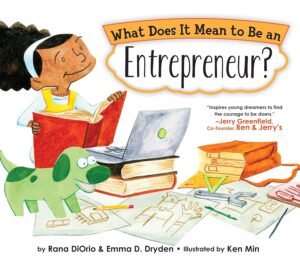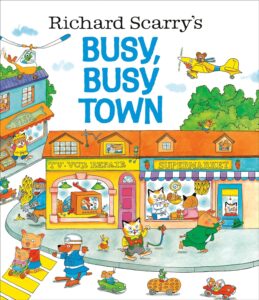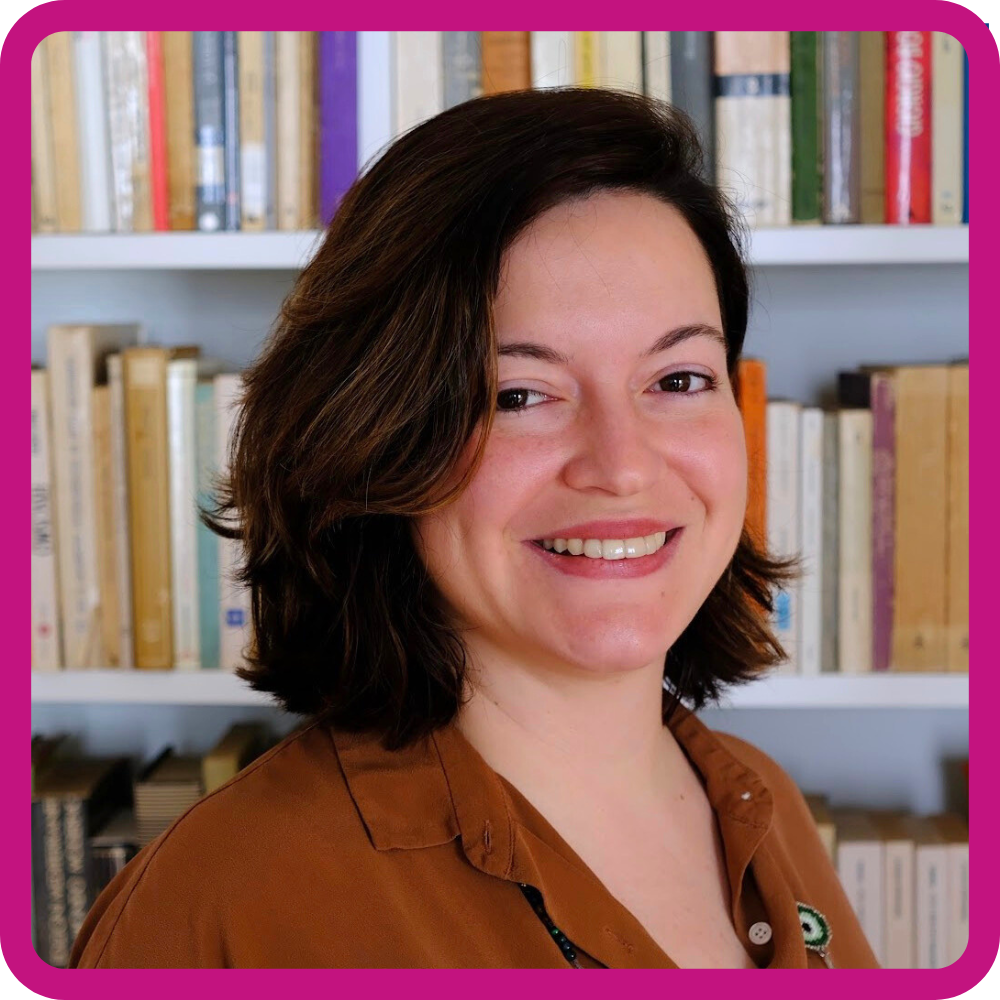 Maria Camila Correa is an editor at Random House Children’s Books, where she acquires and edits innovative and engaging picture books. With experience in multiple aspects of publishing—including editing Dr. Seuss books and international acquisitions—Maria brings a global perspective and an eye for storytelling that captivates young readers.
Maria Camila Correa is an editor at Random House Children’s Books, where she acquires and edits innovative and engaging picture books. With experience in multiple aspects of publishing—including editing Dr. Seuss books and international acquisitions—Maria brings a global perspective and an eye for storytelling that captivates young readers.
 In addition to her editorial work, Maria is also an author and translator. She’s written several Little Golden Book biographies, including Selena, Bob Ross, and Rita Moreno, as well as Spanish Is My Superpower! As a translator, she’s worked on books like Mi hermano está lejos (My Brother is Away) and Mi Little Golden Book sobre Taylor Swift.
In addition to her editorial work, Maria is also an author and translator. She’s written several Little Golden Book biographies, including Selena, Bob Ross, and Rita Moreno, as well as Spanish Is My Superpower! As a translator, she’s worked on books like Mi hermano está lejos (My Brother is Away) and Mi Little Golden Book sobre Taylor Swift.
With her unique perspective as an editor, author, and translator, Maria is helping shape the future of children’s literature. Let’s dive into her journey and what excites her most in new projects.
RVC: When you were a child, what role did books play in your life? Did you have a favorite that shaped your love for storytelling?
MC: Books completely shaped the way I saw the world. I was (am?) an only child, and my parents were both big readers—my dad was a journalist, and he read stories to me very theatrically, acting them out and doing voices, so the stories came alive. He also frequently took me to puppet shows, which I loved—and still do (I just saw Song of the North, an Iranian epic told through shadow puppets, at the New Victory Theater in NYC).
 I was born and spent the first seven years of my life in Colombia, and a lot of the books I was exposed to were Spanish translations of European books; my very favorite was Ophelia’s Shadow Theatre by Michael Ende, which is now sadly out of print. It was very dark for a picture book—about an old lady who, after being fired from her job in a theater, takes home the shadows left behind from all the plays. Without a job, she becomes homeless, and the shadows form a traveling theater and stage plays to help her earn a living. In the end, the old woman takes in the ultimate shadow—Death.
I was born and spent the first seven years of my life in Colombia, and a lot of the books I was exposed to were Spanish translations of European books; my very favorite was Ophelia’s Shadow Theatre by Michael Ende, which is now sadly out of print. It was very dark for a picture book—about an old lady who, after being fired from her job in a theater, takes home the shadows left behind from all the plays. Without a job, she becomes homeless, and the shadows form a traveling theater and stage plays to help her earn a living. In the end, the old woman takes in the ultimate shadow—Death.
RVC: Wow, what a story!
MC: Obviously, this isn’t the kind of story we tend to publish here in the US, but it moved me deeply, and I think this kind of emotional depth is something I still look for when acquiring; the memory of this experience also informs my belief in kids’ ability to engage with complex themes, and in their aesthetic sensitivity.
RVC: Let’s talk more about what informs your work. Your academic background is in photojournalism and children’s literature. How do these two fields influence the way you think about picture books?
MC: Well, photojournalism sharpened my eye and gave me a language with which to talk about visual storytelling that is transferable to picture books. It also taught me to be observant, and to consider different ways of approaching the same subject. The master’s in children’s literature gave me context. It was a master’s in education, and there was also a focus on literacies—literacy acquisition in the traditional sense but also visual and digital literacies—so that’s another perspective from which I try to approach my books, especially early readers.
RVC: Your Master’s dissertation focused on postmodern picture books and Suzy Lee’s wordless Border trilogy. What about that type of storytelling fascinates you?
 MC: I love storytelling that is open to interpretation. Wordless picture books invite readers to co-create meaning, and they can be incredible tools for encouraging critical thinking. Without text to guide them, the reader has to determine for themselves what is happening, what the visual cues signify—and each reader will take something different from the story. In Shadow, Mirror, and Wave (aka The Border Trilogy), Korean artist Suzy Lee uses the gutter of the book as a delineation between opposing forces (in Shadow and Mirror, she plays with the real vs the imaginary). My dissertation explored these books from a psychoanalytic lens, which was a fun exercise (she says in hindsight), but at surface level these stories are very accessible for kids—in some ways more accessible than a traditional picture book, since they allow readers to engage with the story without text as a barrier.
MC: I love storytelling that is open to interpretation. Wordless picture books invite readers to co-create meaning, and they can be incredible tools for encouraging critical thinking. Without text to guide them, the reader has to determine for themselves what is happening, what the visual cues signify—and each reader will take something different from the story. In Shadow, Mirror, and Wave (aka The Border Trilogy), Korean artist Suzy Lee uses the gutter of the book as a delineation between opposing forces (in Shadow and Mirror, she plays with the real vs the imaginary). My dissertation explored these books from a psychoanalytic lens, which was a fun exercise (she says in hindsight), but at surface level these stories are very accessible for kids—in some ways more accessible than a traditional picture book, since they allow readers to engage with the story without text as a barrier.
RVC: Thanks for this quick dive into the interesting work of Suzy Lee! Now, you’ve worked in both the UK and US publishing industries. What are some key differences in how picture books are developed in each market?
MC: I’d say there are more similarities than there are differences, but two come to mind. One is the cadence to which we publish; in the UK, production timelines are often determined by book fairs, so that projects are ready to be shared at Bologna or Frankfurt, and in the US, that timeline is established based on the publication date of the book.
The other difference is that there is just more money in US publishing—and this is reflected in everything from industry salaries to author and illustrator advances, and, in my experience (though I worked for a then-indie publisher in the UK that was particularly adept at this model), this is an incentive for British publishers to have their own staff write/develop books in-house.
RVC: You acquire about 10 picture books per year at Random House. What’s the first thing that makes a manuscript stand out to you?
MC: I look for originality—is there anything new about the concept/execution, or is this something I’ve read a thousand times before?
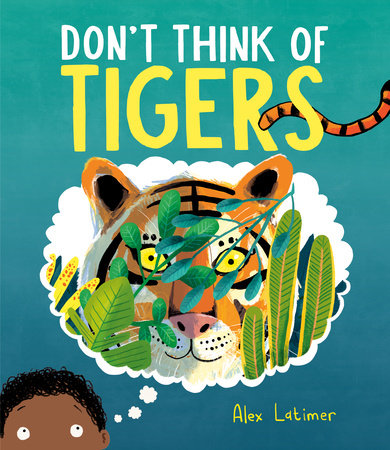
MC: Well, I try to remember the reader, and the experience of reading a picture book, which is usually a shared experience between an adult and a child. Originality is not at odds with accessibility—it can be, if you get really avant-garde, but even though I personally love those very strange and experimental books, I want the books I publish to be enjoyable to kids first and foremost. I like picture books that are funny and playful and irreverent—that wink at the reader mischievously instead of trying to teach them something.
 RVC: You’ve edited Dr. Seuss books, including How the Grinch Lost Christmas! What was it like working within such an iconic brand?
RVC: You’ve edited Dr. Seuss books, including How the Grinch Lost Christmas! What was it like working within such an iconic brand?
MC: Honestly, it was a full-circle moment for me. I remember reading Green Eggs and Ham in ESOL class when I moved to the U.S., so having the chance to create new Seuss stories is very special—and I say “is” because I’m still working on a new line of books called Seuss Studios, where we find emerging author-illustrators from diverse backgrounds and give them access to unpublished Dr. Seuss sketches, which they use as inspiration for their own stories. It’s a cool project that mixes brand legacy with the creators’ unique artistic vision and personal background, and it’s been very exciting to be a part of it.
RVC: That sounds fun! Let’s talk a bit more about emerging authors. What’s something about editing picture books that surprises most debut/emerging authors?
MC: The timeline! Most picture books publish at least two years after being acquired, so it’s a long, drawn-out process. When an editor signs up a book, they are committing to spending the next few years of their lives working on that project with that creator.
RVC: What’s the most common revision note you find yourself giving authors?
MC: Let the art say that.
RVC: What kinds of picture books are you hoping to acquire next? Any themes, formats, or storytelling styles you’d love to see?
MC: I’m really intrigued by the idea that the popularity of horror will trickle down into the picture book space, and I’m open to seeing darker, creeper stories that still feel age-appropriate for kids. I’m also looking for stories by Latin American creators that aren’t necessarily about that cultural experience and that don’t feel like they pander to white readers.
RVC: In addition to editing, you’ve also written several Little Golden Book biographies. What drew you to writing nonfiction for young readers?
MCC: I enjoy the research, and they have a built-in narrative arc, so in that sense I find them less challenging than writing fiction. But I also think it’s rewarding to shed light on figures whose lives kids can draw inspiration from.
 RVC: You’ve translated books like Mi hermano está lejos (My Brother is Away) and Mi Little Golden Book sobre Taylor Swift. What do you find most rewarding about translation work?
RVC: You’ve translated books like Mi hermano está lejos (My Brother is Away) and Mi Little Golden Book sobre Taylor Swift. What do you find most rewarding about translation work?
MC: Expanding the audience for any book is incredibly rewarding, as is the feeling of having understood and captured the author’s intention behind the original work.
Lately, I find myself thinking about the rise of AI and the threat this poses to translators, but translation is an art—it isn’t mechanical. As Japanese translator Fischer Udagawa said in a recent PW article, “a translator translating an author’s prose to move an audience is doing something fundamentally creative and artistic, like a musician playing a composer’s piece or an actor speaking the lines of a playwright.”
I am very passionate about the role of translated literature in encouraging cross-cultural dialogue, and I think translated children’s books open kids’ minds to other experiences and ways of seeing the world. I think, as an industry, we should be looking to other cultures and translating more books into English.
RVC: What’s the biggest challenge when translating a picture book? Are there specific things that are harder to adapt between languages?
MC: Translating rhyme is always challenging but can be equally rewarding. Idioms and slang are also difficult to translate—you have to find an approximation that captures the essence or vibe of the original rather than the literal definition.
RVC: As someone who is not from the US, why do you think it’s important to tell stories by writers from different backgrounds and experiences?
MC: I think editors and publishers have a responsibility to reflect the richness and diversity of the world kids are living in. Especially now, when those books are being challenged and banned. Stories make us feel connected and remind us of our humanity, and by presenting kids with a multiplicity of perspectives, we cultivate empathy.
RVC: What is it you think is special about the picture book as a format?
MC: Picture books are limitless in potential—the dialogue and tension between text and art makes them a uniquely powerful reading experience. They also tend to be quite short, and I love shortform storytelling because it forces the creator to distill their ideas into their most essential form. And often (and certainly in my case), picture books are the foundation for a lifelong love of reading.
I love that Mac Barnett, who was recently named the National Ambassador for Young People’s Literature, is celebrating picture books with his platform Behold, The Picture Book! Let’s Celebrate Stories We Can Feel, Hear, and See.
RVC: One last question for this part of the interview. What upcoming projects at Random House are you especially excited about?
MC: I’ll call out a picture book publishing each season next year: in Spring, I’m excited about Croûton, a very charming picture book about a shelter cat (Croûton) who thinks she’s the one adopting her human; in Summer, To Knit a Ghost features a little witch instructing readers on how to literally knit a ghost, featuring funny and witty interjections by her ghost friends; in Fall, there will be a sequel to Alfie Explores A to Z, an incredibly detailed seek-and-find, this time featuring escaped dogs and time travel.
(I am so grateful to get to do what I do.)
RVC: Alright, Maria—it’s time for the fast and fun LIGHTNING ROUND! Super-quick answers only! Ready?
MCC: Come at me, Ryan.
RVC: What’s your favorite punctuation mark?
MC: The question mark. The design is—let’s face it—sexy, and it signifies curiosity, which—let’s face it—is also sexy.
RVC: You’re stuck in a library overnight—what section are you exploring first?
MC: Picture books (surprise, surprise!).
RVC: What’s a picture book title that would make a great band name?
 MC: Julián Is a Mermaid.
MC: Julián Is a Mermaid.
RVC: You can collaborate with any historical figure on a book—who’s your pick?
MCC: Frida Kahlo.
RVC: A picture book from your childhood that still holds up today?
MCC: Frog and the Stranger by Max Velthuijs.
RVC: What’s one word you’d use to describe the PERFECT picture book?
MCC: World-expanding.
RVC: Thanks so much, Maria!


 Alma and How She Got Her Name
Alma and How She Got Her Name The Bear and the Piano
The Bear and the Piano The Invisible String
The Invisible String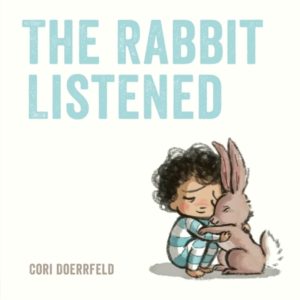 The Rabbit Listened
The Rabbit Listened Welcome to Kathleen Merz, Editorial Director at Eerdmans Books for Young Readers. We bumped into each other at the
Welcome to Kathleen Merz, Editorial Director at Eerdmans Books for Young Readers. We bumped into each other at the 











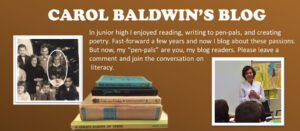
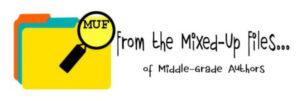

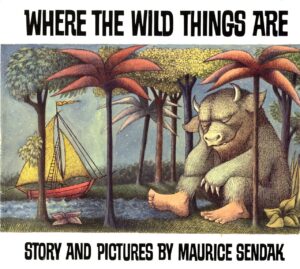
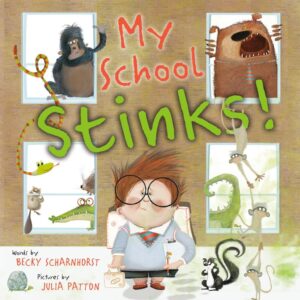
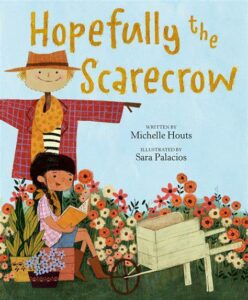
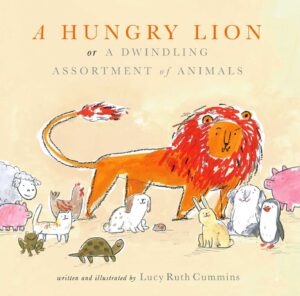
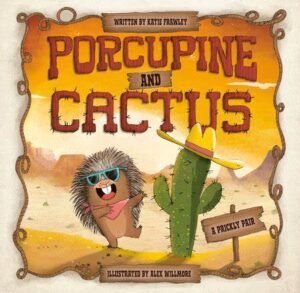
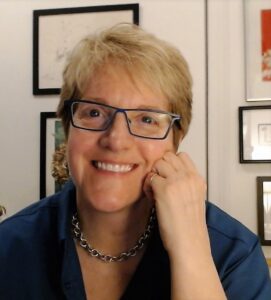 Meet Emma D. Dryden, founder and principal of drydenbks, a premier provider of editorial and coaching services for the children’s publishing industry. Prior to her role as guiding light at drydenbks, Emma was a children’s book editor–first at Random House Children’s Books, and next at McElderry Books, an imprint of Macmillan Children’s Books, where she worked with the legendary Margaret K. McElderry. After Ms. McElderry’s retirement, Emma was made Vice President, Editorial Director of the imprint; in 2005 she became Vice President, Publisher of Atheneum Books for Young Readers and Margaret K. McElderry Books, imprints of Simon
Meet Emma D. Dryden, founder and principal of drydenbks, a premier provider of editorial and coaching services for the children’s publishing industry. Prior to her role as guiding light at drydenbks, Emma was a children’s book editor–first at Random House Children’s Books, and next at McElderry Books, an imprint of Macmillan Children’s Books, where she worked with the legendary Margaret K. McElderry. After Ms. McElderry’s retirement, Emma was made Vice President, Editorial Director of the imprint; in 2005 she became Vice President, Publisher of Atheneum Books for Young Readers and Margaret K. McElderry Books, imprints of Simon 
